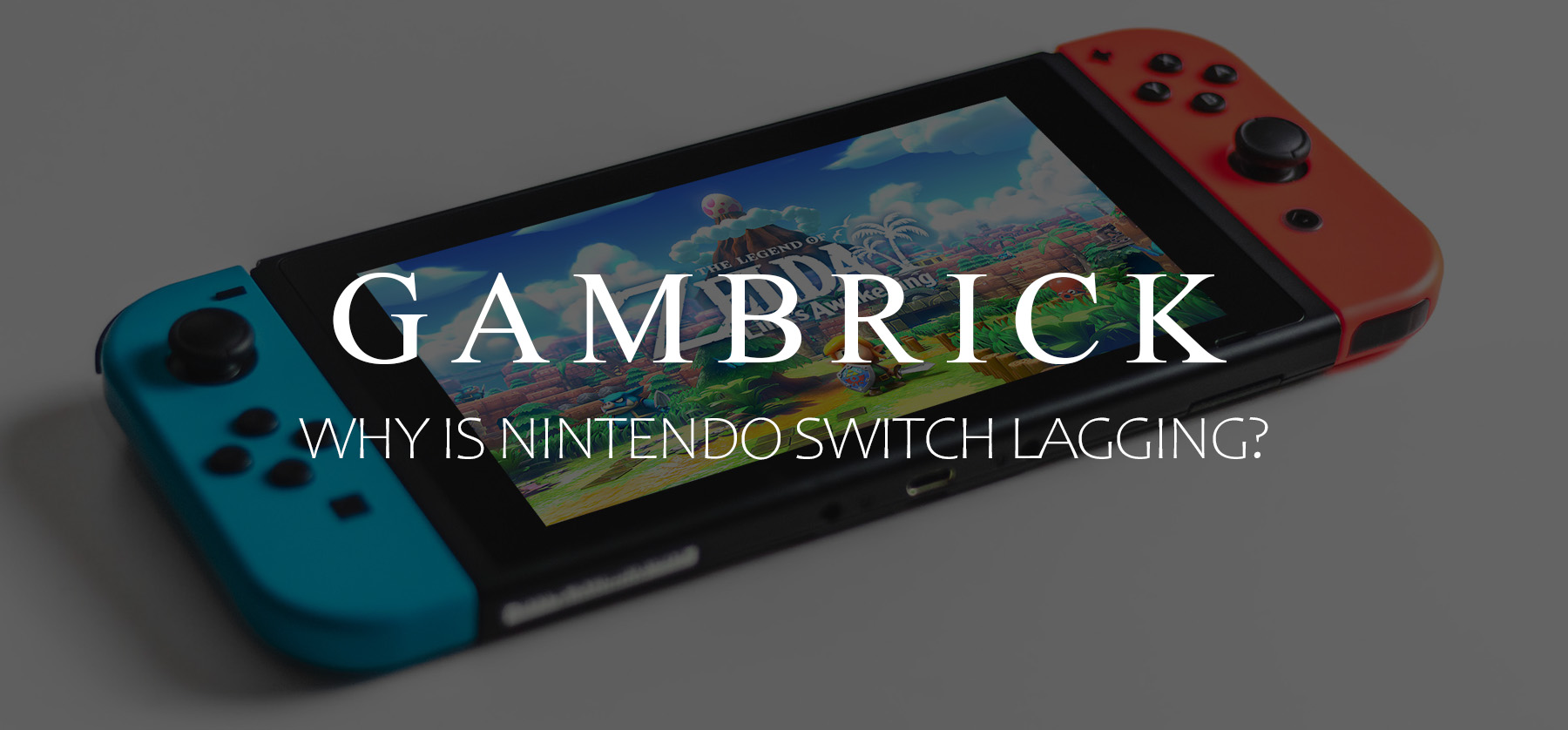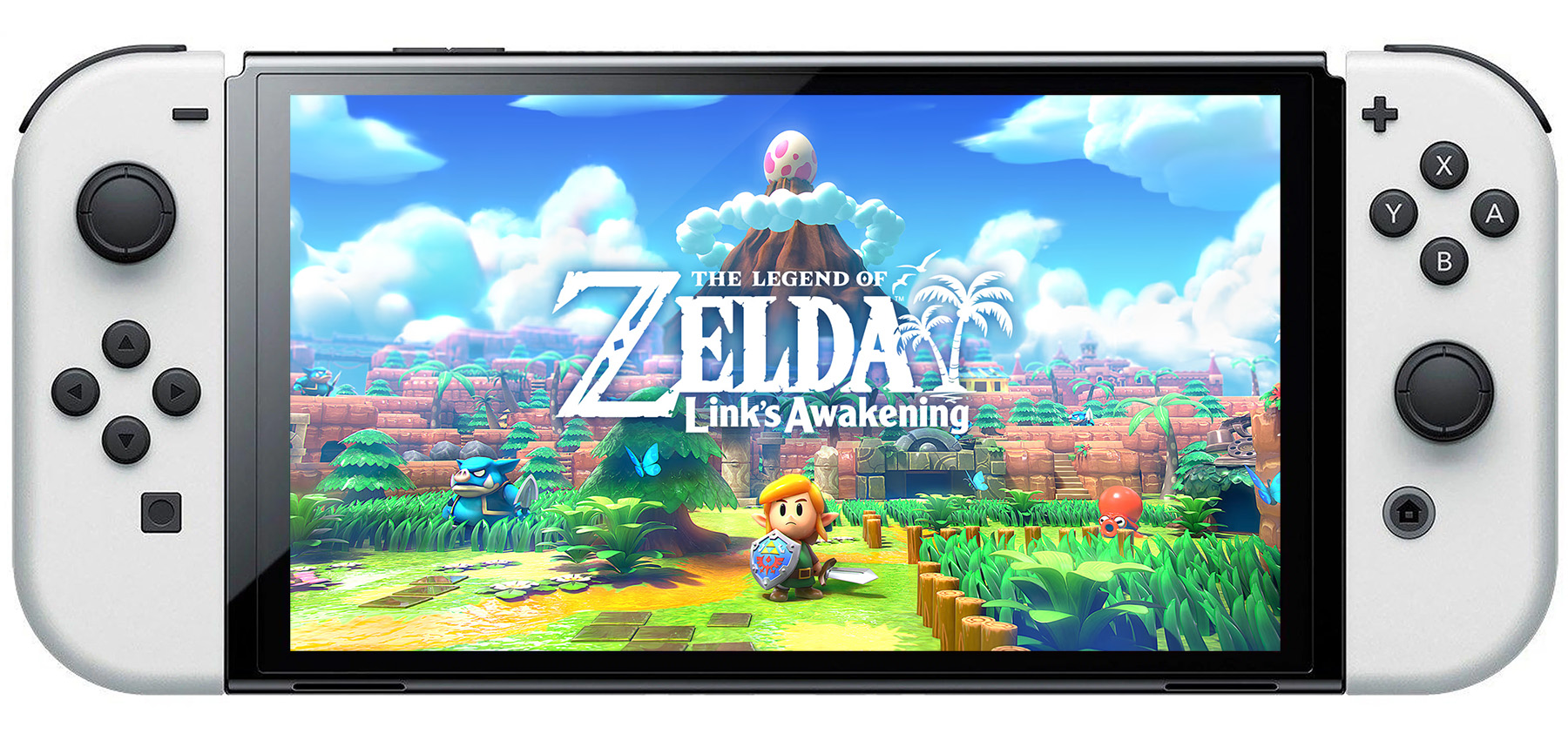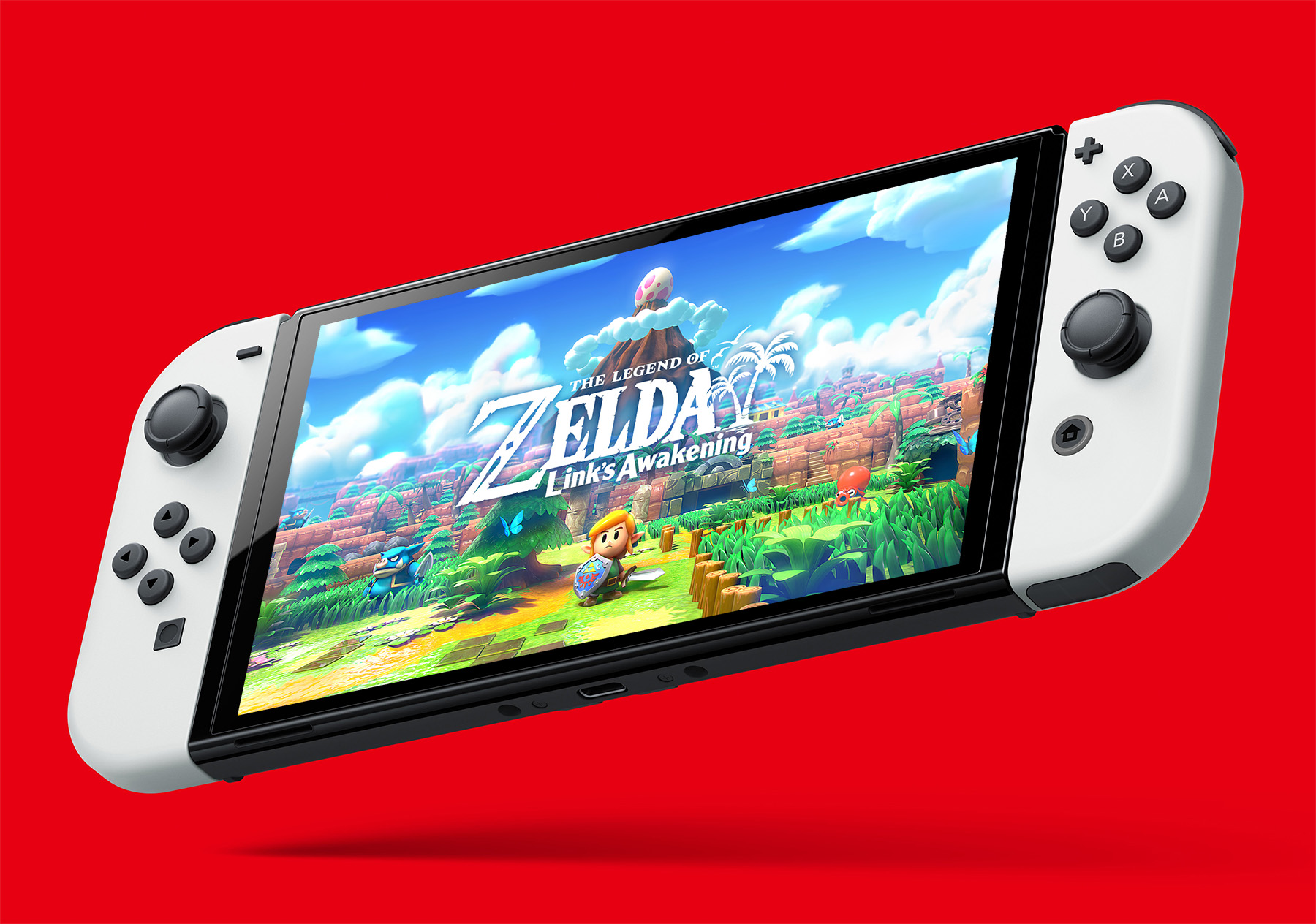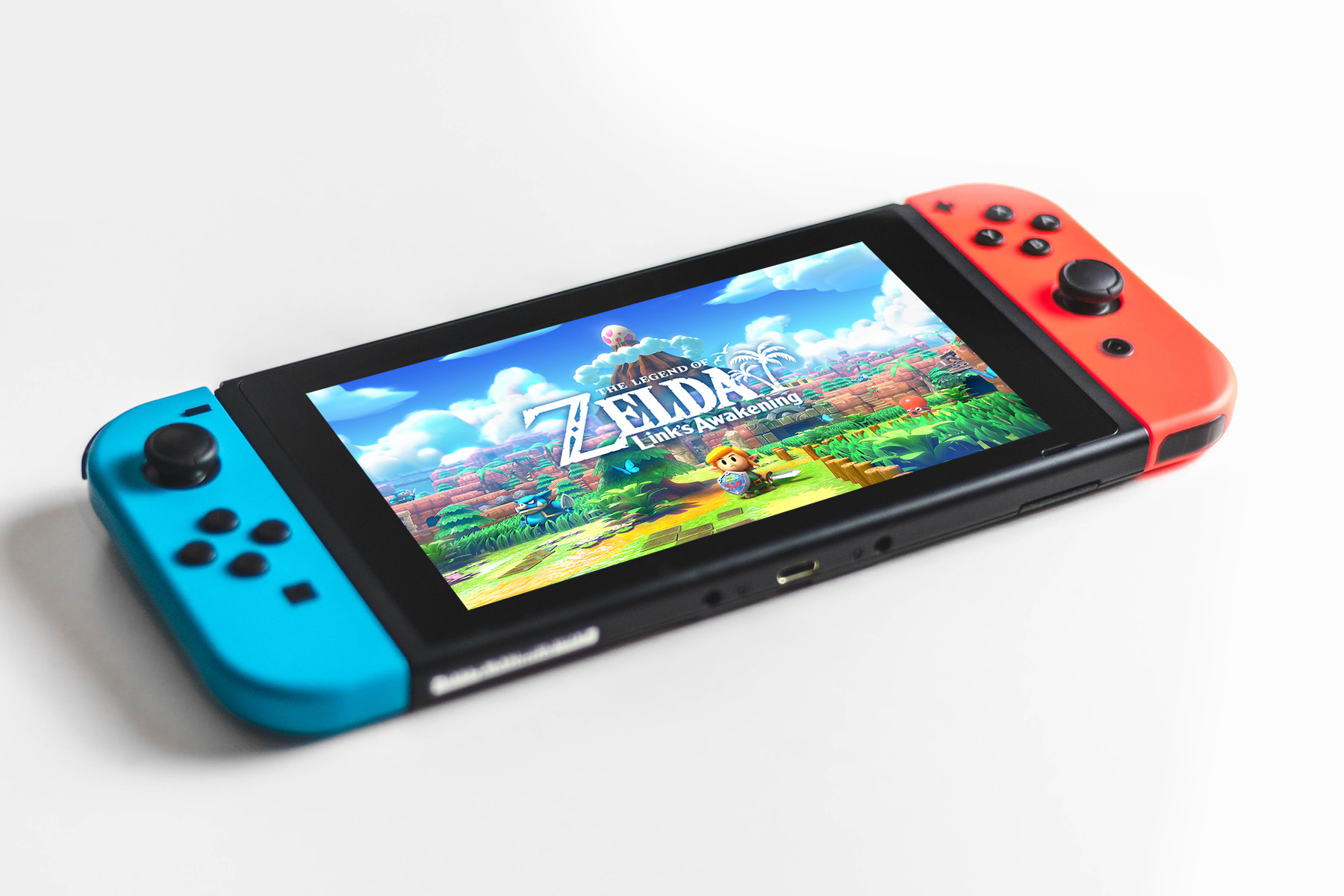Why Is Nintendo Switch Lagging?
Lag is a common problem you may experience using a Nintendo Switch. I have a new OLED Switch, and it lags all the time. There are a few causes for lag, which are easy to fix. A slow or unstable internet connection is one of the most common causes of lag on a Nintendo Switch. If you’re experiencing lag while playing games online, move your console closer to the router or your router closer to where you play games. If moving the router isn’t possible, try installing a WiFi extender to boost your router’s signal strength. You may also need to reset the router and modem if they’re not working correctly. If you’re using too much bandwidth, reduce total bandwidth usage by turning off or disconnecting other devices on the network. In addition, check your router, modem, and internet service you make sure they’re all working correctly.
If the cause of your lag is a bug or software glitch, try a soft reset. Unplug the console and hold down the power button for at least 15 seconds. Let it stay off for 30 seconds, then plug it in and turn it on. This reboots the system’s cache, which may help with lag.
Switch games can lag when they’re not up to date. Make sure to download and install all your game’s latest updates. If that doesn’t work, try deleting and re-installing the lagging game with all the latest updates.
Updating the Switch’s system software can also help fix lagging problems.
A Lagging Nintendo Switch can be fixed by performing a soft reset, updating games, deleting and re-downloading games and their latest updates, updating the console’s software, and improving the internet connection. You can also improve the internet connection by rebooting your router or reducing WiFi bandwidth usage.
What Causes Nintendo Switch Lag?
Lagging is a common problem you’ll have to deal with when playing a Nintendo Switch console. There are a few reasons why it can happen, the most common being a slow or unstable internet connection. If you’re playing games online, the system relies on a strong and stable WiFi connection to work properly. If the internet slows down, or the signal drops, the game will lag.
Lag can also occur when there’s a delay between the controller input and the action on the screen. This can be caused by a slow internet connection, software issues, hardware problems, or bad batteries. Before troubleshooting any other problems, check the batteries to make sure they’re good.
If your Switch game is lagging, check the speed of your internet connection. To play a Nintendo Switch online, you need a stable internet connection with speeds of at least 3 Mbps. If the speed is lower than this, or dips below 3 Mbps while you play, the game will lag or freeze.
If your internet connection is the problem, try the following fixes:
- Resetting the router or modem
- Move the router and Switch closer together
- Install a WiFi extender
- Update the router and modem software
Lag can also be caused by software issues.
- Outdated software: Download and install the latest software version for your game and system.
- Corrupted game files: Delete the lagging game and reinstall it with all the latest updates.
Finally, lag may be caused by the game you’re playing. Some games can overload a Nintendo Switch’s graphics card and RAM which can cause lag on screen. If this is the cause, there’s nothing you can do about it.
The Game Can Cause Nintendo Switch Lag
A common cause of lag on a Nintendo Switch are next-generation third-party games. Xbox and PlayStation consoles are capable of high-definition graphics and resolutions running at high speed. The Switch can’t come close to the graphical performance of other next-gen consoles because it’s designed to be small and portable. Nintendo 1st-party games are designed for the system and look great, but they’re not as resource-dependent as third part titles with near photo-realistic graphics.
When third-party titles are ported to the Switch, they typically have their graphics, frame rate, and resolution reduced to work with the Nintendo’s inferior hardware specs. But some publishers don’t do a great job with the port which causes lag, bugs, and glitches.
A Nintendo Switch is best when running 1st party Nintendo titles and games specifically made for the Switch. But it can lag when playing third-party games that have been ported from Xbox and PlayStation.
How To Fix A Lagging Nintendo Switch
If your Nintendo Switch is lagging, you need to troubleshoot the problem in order to fix it. The most common cause of a lagging Nintendo is a slow or unstable internet connection, so that’s where you should start. Check with your ISP (Internet Service Provider) to make sure there isn’t a problem with your service, then check the router and modem to make sure they’re working properly. Finally, check the signal strength, you may need to move the router and console closer together or use a WiFi extender.
Here are some additional things you can try:
- Next, make sure your games and system are using the latest software update. In many cases, out-of-date software patches can cause lag.
- If you notice some lag from when you press a button on the Joy-Con controller to what happens onscreen, check the batteries. Low batteries can cause input lag. Also, check the Infrared lens on the controller and system to make sure they’re clean and uncovered.
- Make sure there’s nothing in-between the controller and the system. The IR beam needs a clear line of site in order to work properly.
- Check the console for damage.
In the next section, I’ll discuss all the reasons why a Nintendo Switch can lag and how to troubleshoot and fix the problem.
Step 1. Check Your Internet Connection
A slow or unstable internet connection is the most common cause of lag on a Nintendo Switch when playing games online. A way to troubleshoot whether or not this is the cause is by playing the same game on and offline. If the lag is only when you play online, it’s probably due to your internet and not the game or console.
If you’re experiencing lag while playing online games, try the following:
- Call your ISP to make sure there isn’t a problem with the internet service.
- Check the router and modem to make sure they’re operating normally. If not, try resetting them both.
- If you have a weak signal, move the router and Nintendo closer together or install a WiFi extender. You can check the Internet’s signal strength by the Switch with your phone, a speed test, or an app.
- Disconnecting other devices from your network will reduce bandwidth which may improve lag.
- If you have an old router, try switching to a wired internet connection instead of using WiFi.
Check Your Nintendo Switch’s Internet Speed
A Nintendo Switch needs 3 Mbps download and 1 Mbps upload speeds to work properly when gaming online. If you have speeds lower than this, the game could lag or freeze up.
You can run a speed test with a PC, Tablet, or Laptop, an app on your phone, or the Switch to check your internet speeds.
Here’s how to do it using the Switch:
- Select System Setting from your Nintendo Switch’s Home screen.
- Scroll down and select Internet.
- Select Test Connection on the right to run the speed test.
Connection test successful will appear after the test is completed, and the speed results will be shown at the bottom of the screen.
How To Improve Your Nintendo Switch’s Internet Connection
One of the most common reasons a Nintendo Switch lags when playing games online is a slow or unstable internet connection. If your internet speed is slow or goes in and out, your games can become unplayable online. But luckily there are some things you can do to improve your Nintendo’s internet connection.
Reduce Total Bandwidth Usage
Bandwidth usage refers to a network’s ability to transfer data between devices over the internet in a specific amount of time. When playing online games, the Nintendo Switch is on your WiFi network along with all your other devices. All of your devices share the same amount of total bandwidth being output by your internet service, modem, and router.
- To check your internet speed, go to System Settings > Internet > Test Connection. This will tell you your Internet’s download and upload speeds.
- If your download speed is less than 3 Mbps, or your upload speed is less than 1 Mbps, you may experience lag.
To troubleshoot if bandwidth is the problem, reduce your total usage by turning off other devices.
- If your Nintendo Switch stops lagging after you’ve reduced total bandwidth use, you’ve found the cause of your lag.
- To fix the problem, you can either increase your total bandwidth or decrease usage when you play online.
A fast and easy way to increase bandwidth is by hard-wiring your Nintendo rather than connecting it to the internet with WiFi.
Wired Connection Vs. Wireless Connection
A wired connection is faster and more stable than a wireless connection that uses WiFi. A wired Ethernet connection can support up to 10 Gbps, while the current maximum WiFi speeds are limited to 2.4 Gbps. Ethernet also has lower latency than WiFi, which makes a big difference when gaming online.
There’s less chance of interference, bandwidth issues, slowdown, lag, and signal loss when you use an Ethernet cable vs a WiFi connection.
If your Nintendo Switch is lagging when playing games online, try connecting it to your router with a high-quality Ethernet cable.
Restart Your Modem & Router
Restarting your modem and router can sometimes help with a lagging Nintendo Switch. If you leave your router constantly running, over time it can start to slow down or have trouble connecting. A restart clears its memory storage and resets tasks that may have stalled.
To do it, simply unplug your modem and router from their power source and remove the backup battery if they have one > wait for 30 seconds > install the battery and plug them back in.
Once the modem and router reset, they will take a minute or two to come online and broadcast WiFi. You’ll know the reboot is done when all the lights on your router turn green. When that happens, start your Nintendo and go online to see if it’s running faster.
Port Forwarding
Port forwarding, also called port mapping or port management, allows data to flow more easily between your Nintendo Switch and the internet. Doing it may increase internet speeds and reduce lag. To do it, you need to log into your router and Nintendo Switch settings and forward the necessary ports.
Port forwarding a Nintendo is a bit technical, but I’ll provide step-by-step instructions on how to do it below:
PC or Smart Device
- Locate the following network information using a device on your network, such as a laptop, PC, smart device, etc.:
- IP Address
- Subnet Mask
- Gateway
Nintendo Switch Console
- From the Advanced Settings page of your network connection’s settings, select IP Address Settings.
- Select Manual.
- Select IP Address > Hold down the B Button to delete the existing IP address (it defaults to zeros).
- Enter the IP address you found on the network device > add 20 to the last section of digits > and then select OK.
- As an example, if your computer’s IP address displays as 192.168.2.5, enter 192.168.2.25 on the Nintendo Switch.
- Select Subnet Mask > Press the B Button to delete the existing Subnet mask.
- Enter the Subnet mask as it appears in your network settings > select OK.
- For most networks, the Subnet mask is 255.255.255.000.
- Select Gateway > press the B Button to delete the existing gateway.
- Enter the default gateway as it appears in your network settings > select OK.
PC or Smart Device
- Access your router’s settings.
- Locate the Port Forwarding settings. While the location will vary from router to router, it will typically be located in an area titled firewall, virtual server, security, or applications and gaming.
- When asked for an application name, you can enter any word (Nintendo Switch, etc.)
- Within the port range, enter the starting port and the ending port to forward. For the Nintendo Switch console, this is port 1024 through 65535.
- Set the protocol as UDP.
- Enter the IP Address you assigned to the console.
- Check Enable or Apply to turn on this rule.
- Save the changes to your router.
When port forwarding is done correctly, it may increase internet connection speeds and reduce lag on your Nintendo Switch when playing online games. However, it will not reduce lagging when playing games offline. if you continue to experience lag when playing Switch games offline, the cause is not internet related.
Step 2. Update Your Console & Game
If your Nintendo Switch is lagging, make sure the hardware and software are running the latest updates. Old software may contain bugs and glitches that have been fixed in the latest software patch.
Here’s how to make sure your Nintendo is running the latest software version:
- Go to System Settings > System > System Update.
- If there’s an update available, follow the on-screen instructions to download and install it.
Here’s how to download and install the latest software updates for a game:
- From the Home Menu, select the Icon for the software you want to update (without starting the game or application) > Press the + or – Button on your controller > Select Software Update followed by Via the Internet.
If your game is running the latest software but still has glitches and lag, try deleting and reinstalling the game with all the updates. it’s possible for software to become corrupted which can cause lag.
Step 3. Check Your Controllers
If you notice some lag between when you press the Nintendo Joy-Con buttons and what happens on the screen, it may be caused by your controllers. First, check the battery level. Low batteries can cause the controllers to lag or stop working. If the batteries are low, replace or recharge them and the controller should function normally.
If the batteries are good but the controller is still lagging, check the Infrared lens on the controller and Switch. There must be an uninterrupted path between the controller and the Switch in order for the controller to function correctly. Make sure there’s nothing in the way of the beam and that the lenses aren’t dirty or covered.
Lastly, make sure the controller isn’t damaged.
- Make sure your controllers are fully charged.
- Check for damage.
- Make sure the IR lens on the controller and Switch aren’t dirty, covered, or blocked.
If all else fails, try resetting the controllers. Remove the batteries and let them rest for 30 seconds, then install the batteries and turn them on again. Sometimes a reboot can fix minor software bugs and glitches.
Step 4. Clear The Cache
Every Nintendo Switch has a short-term memory called a cache. It’s used to store things like passwords, history, and cookies. Clearing your Nintendo Switch’s cache removes saved IDs, passwords, cookies, history, or other website data on your console. Cache is a limited storage space, so filling it up can potentially cause the system to become laggy and sluggish. But clearing your cache can fix the problem by allowing the system to access short-term saved data much quicker.
Here’s how to clear your Nintendo Switch console’s cache:
- Select System Settings from the Home Menu.
- Scroll down and select System.
- Scroll down again, and select Formatting Options.
- Select Reset Cache.
Clearing the cache for a game can help to improve its performance, especially if it’s running slow or lagging.
Step 5. Check For Corrupted Data
If your game data is corrupted, it can cause lag on your Nintendo Switch. Try the following:
- Delete and re-download the game you’re playing.
- Clear the cache for the game you’re playing.
- Check for any available patches or software updates for the game.
To check for corrupt data, navigate to System Settings >Data Management >Manage Software >Scroll down and select the game > Select “Check for Corrupt Data”
By following these troubleshooting steps, you can fix most issues with lag on your Nintendo Switch. If you’re still experiencing problems, you may need to contact Nintendo support for further assistance.
Step 6. Power Cycle Your Nintendo Switch
Power cycling a Nintendo Switch can help with lag and performance issues. It clears short-term memory which can help with minor glitches and software bugs. A power cycle is essentially a soft reboot of the system which restarts its software.
Here’s how to do it:
- Turn off power to the console and unplug it.
- Leave the Nintendo unplugged for at least 30 seconds.
- Plug the console back in and start it.
Once you power up the console again, the system software will start fresh without any bugs or issues. If the same problem persists, check to make sure there are no updates for the hardware or game you’re playing.
If you have all the latest updates installed for the game and hardware, may have to reboot the system to its original factory settings.
Step 7. Hardware Issues
If your Nintendo Switch is experiencing lag when playing games both online and offline, it could be due to hardware issues. Check to make sure the Micro-SD card is working normally. Remove the card and try it out on a different platform, like a laptop, PC, or tablet. An Apple or Microsoft device will usually be able to detect a problem with the card. If your card is slow or corrupted, replace it immediately because it can cause lagging or freezing during play.
- If you don’t have another device to check the card with, remove it and play the game without an SD card. If the lagging stops, the card is causing your lag.
- Not all MicroSD cards are the same. Some cards are faster and larger than others, and some may not be compatible with a Nintendo Switch. Use a MicroSD cards with a transfer speed of 60-95 MB/s and a UHS speed class of UHS-I or higher.
Inspect the Switch for signs of external damage or water. If you banged the Switch hard or got water in it, there may be an issue with the internal components that are causing lag. If you see signs of damage, take the Switch to a technician. Don’t try and open the console to make repairs by yourself.
In conclusion, hardware issues can cause a Nintendo Switch to lag. If you suspect there may be an issue with the console, try a full factory reset. If that doesn’t work, take the console to a technician or contact Nintendo if it’s still under warranty.
Why Is My Nintendo Switch Lagging?
It can be very frustrating when a Nintendo Switch keeps lagging while you’re trying to play. They’re a small console without the fastest graphics chips or the most RAM, so lag is a constant issue. Lagging can happen from a slow or unstable internet connection, a software issue, a hardware problem, or when the graphics onscreen overwhelm the system. You can fix most of these issues by yourself, but there are some that you can’t.
Before trying to fix your lagging Nintendo Switch, do some troubleshooting to try and identify the cause of the problem. In this section, we’ll discuss the most common issues that can make a Switch lag and how to fix them.
Slow Or Unstable Internet Connection Can Cause Switch Lag
The most common cause of Nintendo Switch lag is the internet connection. To play a Nintendo Switch online, you need a stable internet connection with speeds of at least 3 Mbps. If the speed is lower than this, or dips below 3 Mbps while you play, the game will lag or freeze.
There are a few reasons why you can have slow internet which include the following:
- Router: Your router is what broadcasts a wireless internet signal to the Switch. If the router is slow or having problems, your connection could also be slow or unstable. To fix it, reset the router by unplugging it, waiting 30 seconds, then plugging it back in again.
- Distance: A lagging Switch can also be caused if you’re too far from the router. To fix the issue, move the Nintendo and router closer together.
- Modem: The modem receives internet from your ISP ( Internet Service Provider). Along with resetting your router, you should also reset the modem by unplugging it, waiting 30 seconds, and then plugging it back in.
- Internet provider: The reason why your Nintendo is lagging may be with your internet service. Call your ISP to make sure the internet is working properly.
- Bandwidth: If you have lots of devices online while you’re playing games, you may be using too much bandwidth which could cause lag. To reduce bandwidth, turn off other devices that are also online.
There are a lot of internet-related factors that can cause your Nintendo Switch to lag. In order to fix the problem, troubleshoot each potential cause one by one to see if you can improve the lag.
Software Glitches Can Cause Nintendo Switch Lag
Software glitches are another reason why a Nintendo Switch may lag. These can be bugs in the game you’re playing or in the hardware. One way to tell the difference is if only one of your games lags and not all of them. If the problem was a bug or glitch in the hardware, all your games would be lagging. To fix a software bug in a game, make sure it’s updated to the latest version. If that doesn’t work, delete the game and reinstall it with all the latest updates.
If the glitch is on the hardware side, make sure your console has the latest software. Reset the console by unplugging and turning it off, let it rest for 30 seconds, then plug it in and turn it on. A soft reboot clears out the cache, which is short-term system memory, and sometimes fixes minor software bugs that can cause lag.
As a last resort, reset the system to its original factory settings. A full reset returns the system to its original condition which clears out all bugs and glitches. But it also deletes all your settings, data, and saves, so I recommend performing a full reset as a last-ditch effort once you’ve tried everything else.
Hardware Issues May Cause Nintendo Switch Lag
Hardware issues, like a damaged console or Joy-Con controller, can cause lag. If your games start to lag after the system has been impacted, got wet, or was dropped, get it checked out by a technician. You may have damaged the hard drive, RAM, or circuitry. To find out if your lag is caused by hardware or a game, try multiple games. If they all lag, it’s most likely a hardware or internet issue. If only one game lags, it’s probably not a hardware problem.
A damaged Joy-Con can also cause input lag. When you press buttons on the controller and the action on the screen isn’t immediate, you may have a bad controller or low batteries. Here are a few things you can do to troubleshoot the problem.
- Check the batteries. Remove the batteries and replace them with new ones to see if it helps.
- If changing the batteries doesn’t help, try a different controller to see if the lag goes away. If it does, the controller was damaged.
- Check to make sure the Infrared on the controller and system are clean with no interference between them. For a Switch controller to work properly, you need a clear line of sight between the system and the controller.
Identifying the cause of lag is very important if you want to fix the problem. By troubleshooting different likely causes for lag, you can isolate the problem and deal with it. If you can’t fix the lag yourself, contact customer support and let them know everything you’ve tried. This info will help them identify the problem and possibly provide a fix.
Corrupted Software Can Cause Lag
A Nintendo Switch can lag due to corrupted software. This can be software for the game you’re playing or the hardware. To fix the issue, delete the game and reinstall it with all the latest updates. Also, make sure the system has the latest software patch installed.
Sometimes, old patches for a game or a system update may contain bugs from the manufacturer or publisher. They then fix these bugs with later updates. if you don’t download and install the latest update, your game could be buggy which can cause lag.
When playing online Switch games, Nintendo will usually force you to download the latest update in order to play. However, if you play offline games, you have the option to play without updating the game. But you should always do it anyway. Even though you can still play the game without an update, it may be a buggy version.
Is Nintendo Switch Faster When Docked?
A Nintendo Switch is typically faster when docked vs when used as a portable system. But the dock doesn’t directly increase the Switch’s performance, instead, it makes it run faster in indirect ways. When docked, the console draws power from a 110v outlet rather than the battery which increases its performance a bit. The base also has a fan located right behind the back left side intake vent which turns on to keep the console cool. When the Switch is kept cool its internal components operate faster than when they’re hot.
A Switch must work harder, and faster when docked because it has to display graphics on a much larger external display. But the performance boost needed by being docked varies from game to game.
I’ve noticed that being docked vs portable has no impact on 1st party Nintendo titles like Mario and Zelda, but it does seem to matter when playing 3rd party games like Sonic or The Elder Scrolls.
Why Is My Nintendo Switch Connection So Slow?
The most common reason why a Nintendo Switch connection is slow is due to a slow or unstable WiFi connection. Slow download speeds are generally the result of slow Internet from your ISP, a modem or router issue, or the distance between the router and the console being too far which causes a weak signal. Other causes of console slowdown are signal interference or using too much bandwidth.
Summary: Why Is Nintendo Switch Lagging?
Lag is a common problem you may experience using a Nintendo Switch. I have a new OLED Switch, and it lags all the time. There are a few causes for lag, which are easy to fix. A slow or unstable internet connection is one of the most common causes of lag on a Nintendo Switch. If you’re experiencing lag while playing games online, move your console closer to the router or your router closer to where you play games. If moving the router isn’t possible, try installing a WiFi extender to boost your router’s signal strength. You may also need to reset the router and modem if they’re not working correctly. If you’re using too much bandwidth, reduce total bandwidth usage by turning off or disconnecting other devices on the network. In addition, check your router, modem, and internet service you make sure they’re all working correctly.
If the cause of your lag is a bug or software glitch, try a soft reset. Unplug the console and hold down the power button for at least 15 seconds. Let it stay off for 30 seconds, then plug it in and turn it on. This reboots the system’s cache, which may help with lag.
Switch games can lag when they’re not up to date. Make sure to download and install all your game’s latest updates. If that doesn’t work, try deleting and re-installing the lagging game with all the latest updates.
Updating the Switch’s system software can also help fix lagging problems.
A Lagging Nintendo Switch can be fixed by performing a soft reset, updating games, deleting and re-downloading games and their latest updates, updating the console’s software, and improving the internet connection. You can also improve the internet connection by rebooting your router or reducing WiFi bandwidth usage.
If you have any questions or comments about why your Nintendo Switch is lagging, email any time.
























